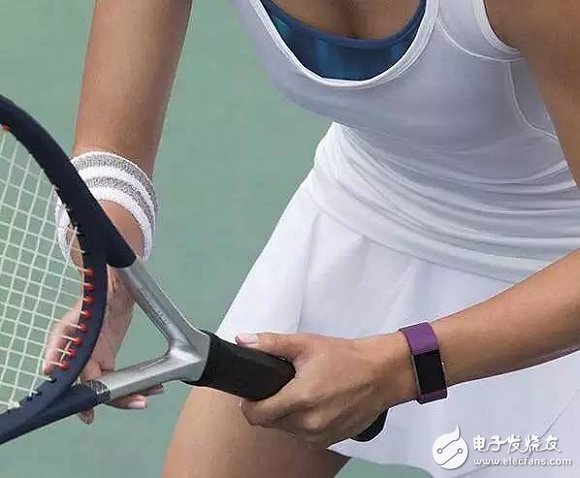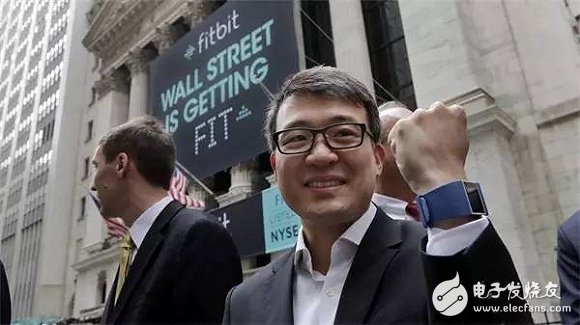According to statistics, in 2016, global sales of sports wearable devices are expected to rise from 23 million in 2014 to 79 million, and will rise to 123 million in 2018. The wearable technology market covers a wide range of products, including medical devices, health trackers, headsets, and hearing aids. Its annual global market value is about $30 billion.
Billion dollar market
Market research firm IDTechEx predicts that wearable device revenue will rise to $40 billion by 2018, $20 to $100 billion, and $150 billion by 2026.
The sports wearable part alone can be divided into a variety of equipment according to technology, application areas and innovative companies. One of the earliest records of the use of wearable devices in professional sports was in 2004, when Australian football used GPS positioning and tracking equipment. Compared to the current technology, the technology at the time was much older.

â–³ Whoop sports bracelet
Take the sports bracelet Whoop as an example. It can help swimmers to track heart rate, analyze physical stress, recovery and sleep, and improve the user's physical skills without overtraining.
Halo Sport headphones send radio signals to the athlete's brain, stimulating the muscles of the user and optimizing the effectiveness of the training session. Halo said that the US ski jumping team used this headset to significantly improve the driving force and jumping smoothness.
In the 2015-2016 Premier League season, Leicester City wore the OpTImEye S5 equipment from Catapult Sports in the previous training. It collects data such as acceleration, direction, position, and collisions. During the season, the wounded in Leicester City was the least. Other wearable devices include tops with tracking devices, bone conduction technology goggles, and more.
Fitbit is a big one, Xiaomi and Apple are catching up
According to a recent study by research firm IDC, the global wearable device market has grown by 26.1% from last year to 22.5 million. In the case of a serious decline in Apple Watch, Fitbit became the industry leader in this field due to its outstanding performance in the wearable device business in the second quarter. According to IDC, Fitbit recently launched the Charge 2 and Flex 2 bracelets, which increased sales by 29% and occupied 25.4% of the market.

â–³ Fitbit Charge 2
Xiaomi from China accounted for 14% of the market, and sales increased by 2.5%, ranking second. The sales of smart watches launched by Apple a year ago fell by 56.7%. Although Apple did not publish official sales data for smart watches, IDC estimates that it only captured 7% of the global wearable device market, with 1.6 million units sold.
According to IDC analysts, the wearable market is divided into a single-featured basic device and a multi-function device that supports third-party applications, communications, and mobile payment. IDC research manager Ramon Llamas said that basic equipment accounted for 82.8% of total sales, and most dealers have also taken a fancy to the cake.
“At the same time, smart wearables are still struggling to find a place in the market,†Llamas said. “People have great curiosity about smart wearables, especially smart watches. But they also want users to believe that this It is a necessities of life."
The future of wearables has attracted many tech giants and advanced independent companies. The Microsoft Bracelet and Apple Watch sports are in full swing in the fitness wearable market.
However, Fitbit is the leader in sports wearables. In 2007, James Park and Eric Friedman founded Fitbit in California. It is currently the largest player in the sports tracking equipment market. Its unit sales increased from 300,000 in 2011 to 21.4 million last year, with 9.5 million active users.

â–³ millet bracelet
Last year, Fitbit was listed on the New York Stock Exchange, with revenues of $1.86 billion in 2015 – more than double the $745 million in 2014. Its net income for the same period increased from $33.7 million to $117 million, and its current market value reached $3.2 billion.
It also plans to expand in the European market. In the second quarter of this year, its revenue in the European market increased by 150%. China is seen as the fastest growing market for Fitbit devices.

â–³James Park, one of the founders of Fitbit
Fitbit's dominance has been challenged by Apple and Xiaomi. According to research firm IDC, in the first quarter of 2015, Fitbit's global market share fell from 32.6% to 24.5%.
However, analysts believe that the realization of user information through software and data is inseparable from a valuable growth area. In fact, Mr. Park recently told CNBN TV that personal data is very important. “People are always unsure of what to do and are willing to pay for advice,†he said. “We have a lot of data and the right smart software. I think we can improve useful health information for our users.â€
It is predicted that the health, sports and leisure markets will continue to rise, which means that the relevant wearable devices will usher in better development.
Revolution in sports training
Professor Bill Gerrard of the School of Business and Sports Analysis at the University of Leeds said that the development of wearable devices, especially the development of GPS monitoring equipment, will revolutionize professional sports training. Sports experts use a large number of trajectory data that can display the player's position, and monitor the athlete's physical performance through distance and data analysis. However, there is still much potential in the entire market by tracking the player's off-ball activity and analyzing the GPS data.
Football and rugby coaches can use this technique to see how quickly the player needs to lose the ball and form the best defense offensive. Basketball coaches can assess how players can avoid the opponent's defense and create shots.
Tennis wearables can identify the best combination of shots and increase the likelihood of winning a particular player. Wearable devices plus data analysis are equal to intelligent training.
A practical professor at Warwick Business School believes that sports wearable devices are rapidly evolving from lifestyle tracking devices to more advanced technologies. This technology is becoming more and more independent of computers and mobile phones, and becomes integrated with wearable devices, giving users real-time feedback on activity information. They not only collect data, generate activity plans, but also herald the next peak in technological advancement.
The sports wearable market is one of the primary driving forces of the Internet of Things and a rapidly growing field. According to a report by global market research consultancy Mintel, the UK's wearable market grew by 118% in 2015.
The development of augmented reality makes wearable devices, together with real-life coaches and other auxiliary devices, form a data map that records user behavior, monitoring people's athletic performance and improving people's lifestyles.
Screw Thread Sensor
Screw Thread type NTC temperature sensor with the properties of liquid temperature measurement, good waterproof effect and plug-in detection has been used into water heater, liquid temperature measurement, testing water temperature in pipe and so on.
Temperature range is from -30°C to 150°C.
Screw Thread Sensor,Water Temperature Sensor,Liquid Temperature Sensor
Feyvan Electronics Technology Co., Ltd. , https://www.fv-cable-assembly.com